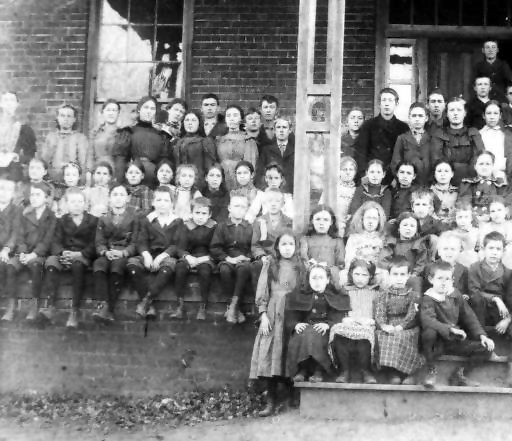“School Days… Dear old golden rule days.”
Schools are back in session which determines the official start of fall replete with football games, band and cheerleading practice, PTA meetings and many other activities for parents and their children.
One might find it interesting to consider the contrast between today and yesterday’s schools. Today, the Golden Rule is no longer taught in the public system, the use of a hickory stick is considered corporal punishment, calico has given way to jeans, and children write on an electronic tablet rather than a chalk slate.
By the mid-1800s, telephones were not commonly available, but today’s school children communicate via cell phones. The average car ownership today is two per family. In the 1800s, every family had a horse and buggy which served as the main mode of transportation. As in the past, but not as much, the school house is still used for other occasions such as a place of meetings, assemblies and socials.

Concord Private School for Girls (Courtesy of Farragut Museum and the Gene and Frances Abel Family in their book “The Village of Concord, Where Time Stood Still.”)
By the mid-1800s, the Concord Farragut community spanned the map from the Bluegrass area to the Roane County line (which became Loudon County in 1870). The vast area was dotted with many one-room schoolhouses; a few of them include: Boyd’s School, Chota, Ebenezer, Garland, Hart School, Lovell, Paulette, Pleasant Hill, Rocky Point, Shady Grove, Toole’s Bend, Virtue and West Emory. Two schools that perhaps held the largest populations of children were in the immediate location of the historical town of Concord: Concord Private School for Girls and Concord Public School.
The Concord Private School was formed in 1885 in a schoolhouse built by Samuel Love Russell on what is now Olive Road in Concord. It has been referred to as a private school for girls; however, the picture shows boys in attendance as well. Mr. Russell and his wife, Amanda Rodgers Russell, had three unmarried daughters, of which the oldest, Alice, was the principal teacher. Another daughter, Jean, was an historical writer and very active in the church as a Sunday school teacher and church worker. The third daughter, Lizzie, preferred and was happy to keep house for the others. But together, they ran a very successful private school until 1911 when public schools were becoming the place for children in the area to attend.
In 1899, an agreement was reached between the Knox County Superintendent of Schools and the Concord Chota Masonic Lodge to rent the two lower rooms for $5 a month. The lodge building soon became known as the Concord Public School and was also used by the community as a motion picture theater and a polling place.
In 1902, Farragut High school was opened as a wooden frame building on land donated by Mr. W.A. Doughty at the corner of Kingston Pike and Concord Road. That building burned in 1906 and was replaced by a brick building. These two buildings also housed the first eight grades until 1922, when the Farragut Elementary School was formed.
Yes, education today is very different from when our great grandparents were “a couple of kids.” Three Rs have now expanded. Contemporary educational programs have children beginning to learn computers from the time they can reach the keyboard and languages other than English are introduced early in the elementary curriculum. Even so, an emphasis is being placed on the importance of learning a trade as a vocation and the return of the private school environment is becoming more popular. The pendulum is swinging as the theory of the one-room schoolhouse is becoming another reality with a greater number of children that are being home schooled. Regardless, the hyperlink evolution of “School Days” will continue to be important if our children are to be prepared for the internet-connected society of today and beyond.

